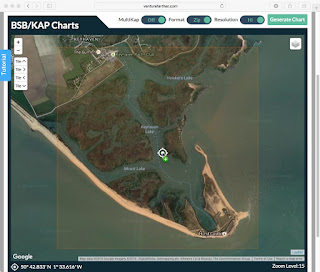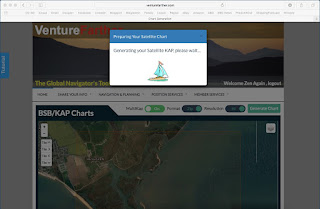Hi everyone,
We've now been on a mooring in the Keyhaven River for nearly a week. It's a great place and the moorings may be the cheapest in the Solent. Entry for keelboats is limited depending on draft and the river is mostly quite shallow. We're using a stern anchor to keep us in deep water. We expect to remain here for several more weeks.
It's a ten minute dinghy trip from our mooring to the small village of Keyhaven. It is so small there's only one pub - The Gun - but it is a very nice pub indeed. There are two very active yacht clubs - Keyhaven Yacht Club and Hurst Castle Sailing Club. The former has an immaculate new clubhouse and visiting yachties are welcome. Hot showers (free) and warm beer (not). Honesty box tea, coffee and biscuits. Most civilised!
 |
| Keyhaven River |
 |
| One of many lovely boats on Keyhaven River |
 |
| Sun descending over the Keyhaven River |
Last Sunday our OCC friends John and Chris, who live nearby, showed us around the area by car. We visited the closest town Milford on Sea and also the bigger town of Lymington. They also treated us to a home-cooked dinner which was very nice indeed. It's great to have
OCC contacts around the world!
We've spent a lot of our time job hunting. Plenty of jobs advertised and Brexit doesn't seem to have slowed them down. We've had several phone interviews and will attend a couple of on-site interviews next week.
When not job hunting we've been removing several items of surplus equipment to prepare them for sale. The Aries vane gear, Iridium GO! and Icom HF/SSB are listed on eBay. We're sad to be selling the Aries but it needs refurbishing which isn't practical aboard. Less attached to the electronics kit which is best sold while still current equipment. We'll replace them with the latest kit before going blue water cruising again.
We've been exploring the local area too. On Wednesday we walked to Lymington along the coast, past the ancient salterns where salt was harvested until the 1800s. Lots of birds including swans, geese, oyster catchers, coots and of course ducks. In Lymington we visited the local rigger to see how much it will cost to replace our standing rigging. We also talked to a marine gas fitter about fitting a heater. We walked back along the more direct inland paths which was also very nice.
 |
| XOD class keelboats racing on the Solent |
 |
| Country Lane |
 |
| Country Pub |
On Thursday we dinghied over to Hurst Castle and toured the site. The original castle was built by Henry VIII and it was manned continuously from the mid 1500s to the 1950s. The Victorians expanded it substantially, installing the same type of muzzle-loading rifled cannon we saw in Bermuda. During WW2 it had lots of anti-aircraft guns but they were never fired since they didn't want the enemy to know the castle was still manned!
 |
| Hurst Castle |
 |
| Hurst Castle |
 |
| Original castle entrance surrounded by Victorian brickwork |
 |
| Victorian big gun |
 |
| Zen Again (right) from Hurst Castle |
 |
| Hurst Shingle Bank |
One of the exhibits in the castle described local WW2 history, much of which was about the D Day landings. We were amazed to find a model of the corvette HMS Bluebell which apparently escorted the invasion fleet. I believe the late Max Shean (an ex FSC Cruising Captain whose S&S 34 was called Bluebell) served on this ship early in the war before volunteering and serving in X craft (midget submarines).
 |
| Model of HMS Bluebell at Hurst Castle |
While walking along the huge shingle bank which extends from the mainland to the castle we were treated to a one-aircraft air show. A P51 Mustang did very low-level aerobatics between the Needles and the castle. Nobody knew why but it was a great show!
 |
| Impromptu air show by P51 Mustang |
Trust all's well where you are.



















































